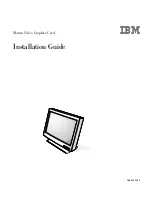
ZyAIR B-620 User’s Guide
Using the ZyAIR Utility
3-5
3.4.1 SSID
The SSID (Service Set Identity) is a unique name shared among all wireless devices in a wireless network.
Wireless devices must have the same SSID to communicate with each other.
3.4.2 Channel
A range of radio frequencies used by IEEE 802.11b wireless devices is called a channel.
3.4.3 Transmission Rate (Tx Rate)
ZyAIR provides various transmission (data) rate options for you to select. Options include
Fully Auto
,
1 M
bit/sec
,
2 M bit/sec
,
5.5M bit/sec
and
11M bit/sec
. In most networking scenarios, the factory default
Fully
Auto
setting proves the most efficient. This setting allows your ZyAIR to operate at the maximum
transmission (data) rate. When the communication quality drops below a certain level, the ZyAIR
automatically switches to a lower transmission (data) rate. Transmission at lower data speeds is usually
more reliable. However, when the communication quality improves again, the ZyAIR gradually increases
the transmission (data) rate again until it reaches the highest available transmission rate.
If you wish to balance speed versus reliability, you can select any of the above options
11M bit/sec
or
5.5M bit/sec
is used in a networking environment where you are certain that all wireless devices can
communicate at the highest transmission (data) rate.
1M bit/sec
or
2M bit/sec
are used often in networking
environments where the range of the wireless connection is more important than speed.
3.5 Wireless
Network
Type
Wireless LAN works in either of the two modes: ad-hoc and infrastructure.
To connect to a wired network within a coverage area using Access Points (APs), set the ZyAIR operation
mode to
Infrastructure(BSS)
. An AP acts as a bridge between the wireless stations and the wired network.
In case you do not wish to connect to a wired network, but prefer to set up a small independent wireless
workgroup without an AP, use the
Ad-hoc (IBSS)
(Independent Basic Service Set) mode.
3.5.1 Ad-Hoc (IBSS)
Ad-hoc mode does not require an AP or a wired network. Two or more wireless clients communicate
directly to each other. An ad-hoc network may sometimes be referred to as an Independent Basic Service
Set (IBSS).
















































